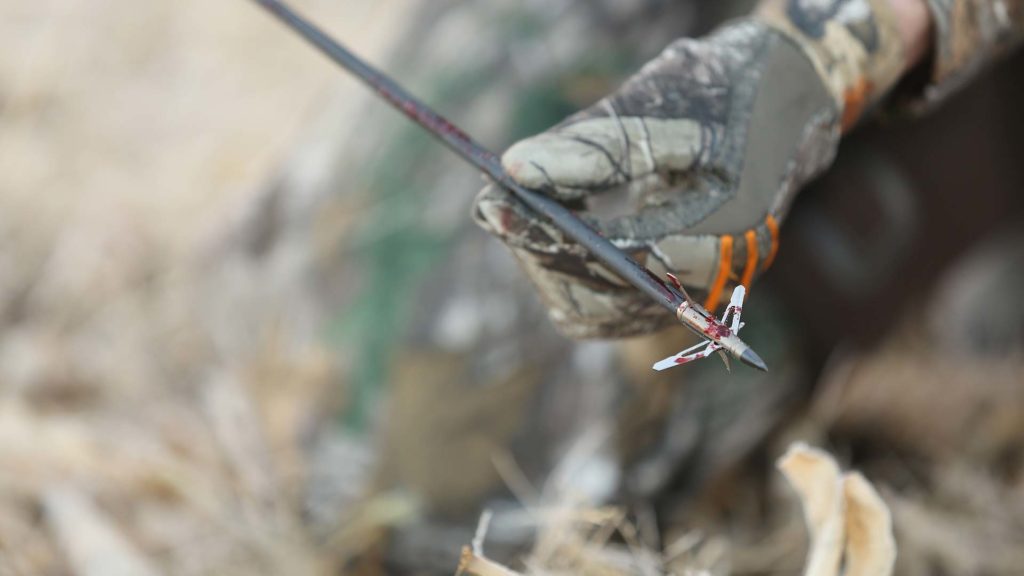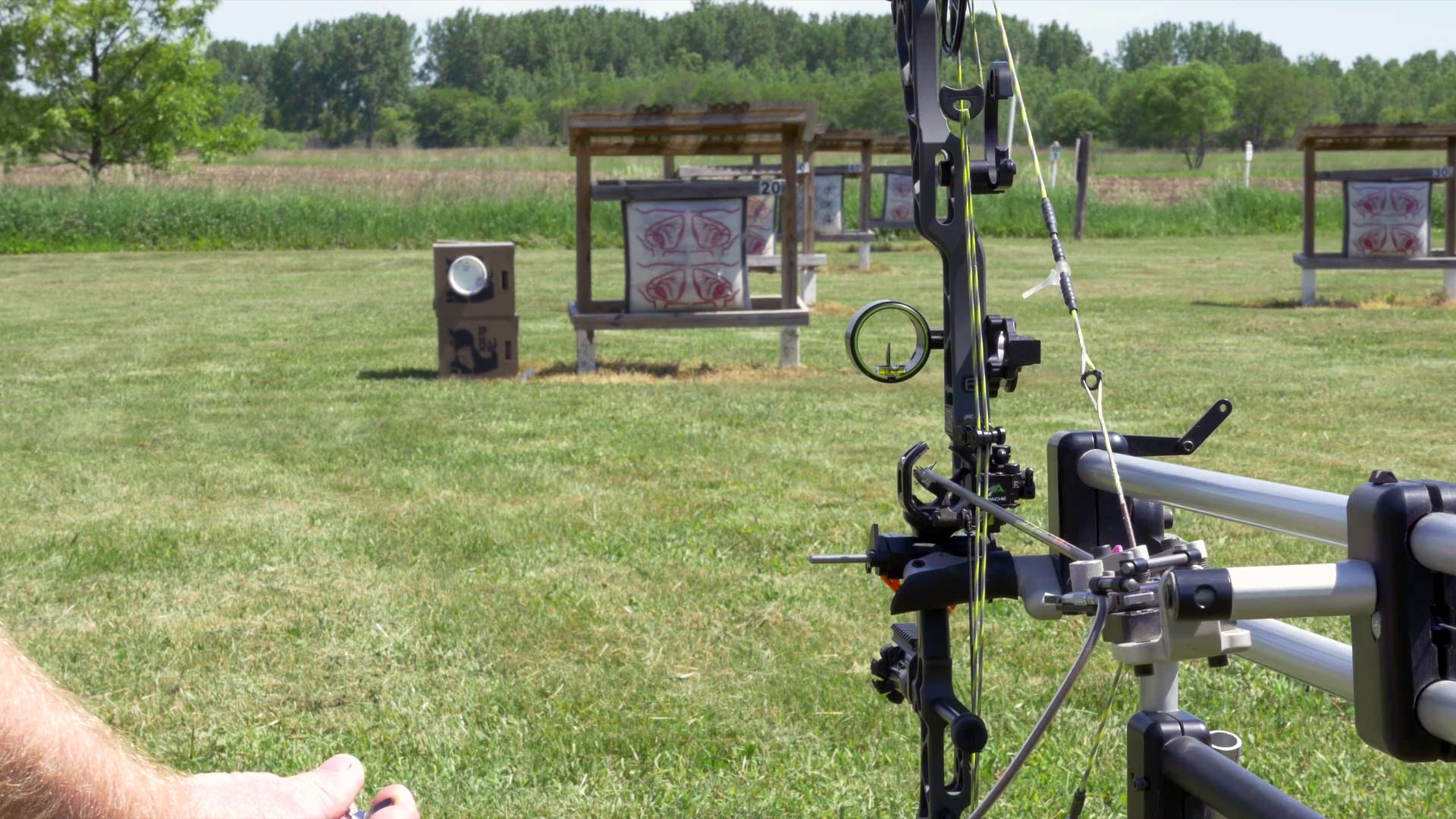Few items in the bowhunter’s world attracts the time and attention that broadheads do. Sure, the bow is the foundation for everything, and the bow will get its moment in the spotlight, but day in and day out broadheads seem to be at the root of all bowhunting camp discussions, debates, questions, and concerns. That’s why our team chose broadheads as the focal point of our lead evaluation for 2017.

Your broadhead is the single most important piece of equipment when it comes to making a quick, clean kill.
Our goal for the this broadhead test was not to rate each broadhead and declare an overall winner, but rather to show and share the results of the broadheads tested. To single out one broadhead as the “best of the best” would hardly be fair when it comes to shooting a combination of fixed blade broadheads, mechanical broadheads, and even hybrids. What one bowhunter desires in a broadhead often varies greatly from the next guy. Some want monster wound channels, while others want complete pass-throughs regardless of the hole left behind. So our evaluation simply focused on putting these broadheads through a variety of tests and recording the data for our audience to see and compare.
Equipment Used
To eliminate any human errors and flaws in shooting performance, we used the Hooter Shooter from Spott Hogg. Our test bow was a Mathews Halon 32, 6″ brace height, 29″ draw length, and 65# draw weight. We used Black Eagle Rampage 300 arrows weighing in at 485 grains total weight. It’s a pretty heavy arrow setup, but one that we often use in the actual hunting scenario.
Broadhead Selection
There are dozens upon dozens of broadhead choices on today’s market. Some companies and designs have proven themselves over decades of use, while others are relatively new to the market. Our team worked collectively to identify a variety of mechanical, fixed and hybrid design heads from multiple companies for our test. We understand that your favorite broadhead or brand may not have been represented, but unfortunately we couldn’t get to all of them. If there are and brands, models or styles not represented in our test that you would like to see in future tests, please comment below and let us know.
The Broadhead Tests
We focused on three tests to demonstrate each broadhead’s performance in accuracy, penetration, and durability.
Accuracy Test
We fired 3 shots from the same broadhead and same arrow into a paper plate at 20 yards. We then measured the three shot group of each broadhead to give an overall look at how each performed in the way of accuracy. Measurements were taken from the center point of the hole left in the plate. This test was designed to simulate standard bowhunting conditions where, in spite of advances in archery technology, most shots are still 20 yards and under.
Penetration Test
Each broadhead was shot into a clear synthetic ballistics gelatin at 15 yards. The front side of the gelatin was covered with a leather material to roughly simulate an arrow punching through a deer’s hide. We recorded two measurements from this test. One was the cutting diameter the broadhead produced in the leather material upon entry. The second measurement was the distance the arrow penetrated into the ballistics gelatin. The gelatin used is scientifically designed to mimic human flesh, so for purposes of testing we felt it would work the best. Plus it doesn’t melt in the sun which really came in handy!
Durability Test
We shot each broadhead into a 3/8″ sheet of plywood to get an idea of how the broadheads performed in the way of durability. Would they handle the impact and keep working as it passed through or fail upon impact? We also recorded the “entry wound” effect each broadhead left on the plywood.
Watch The Video
Broadhead Test Results
Accuracy
As you’ll see, there was very little difference from the largest groupings to the smallest groupings. Meaning that at 20 yards, from a well tuned bow, every broadhead we tested was plenty accurate enough to be deadly in the field. Modern advancements in broadhead design and improvements in manufacturing have made fixed blade and mechanical broadheads nearly identical in terms of accuracy – when shot from machine. However under hunting circumstances when the adrenaline is pumping and your form may suffer, it is entirely possible that you may see different results.
For 2018’s test we plan on making two changes. One, we will be shooting at longer distances. While all heads performed well at 20 years, we are interested to see how they will stack up at 40 and 50 yards. Two, we will shoot a group of arrows using field points to establish a control group.
Here are the 2017 broadhead accuracy tests, largest group to smallest group.
- Simmons Mako 100, 1-1/2″
- Dirtnap Gear BMF, 1-1/2″
- Fire-N-The-Hole, 1-1/2″
- Magnus Stinger Buzzcut, 1-1/4″
- NAP Thunderhead Nitro, 1-1/4″
- Truglo Titanium X Mechanical, 1-3/16″
- Wasp Drone, 1-1/8″
- Grim Reaper Hybrid, 1″
- Slick Trick Standard, 1″
- Wac’Em Steel Expandable, 1″
- Wasp Jak Knife, 1″
- Truglo Titanium Fixed Blade, 1″
- Flying Arrow Toxic, 1″
- Rocky Mountain Warhead, 1″
- Muzzy Trocar, 15/16″
- Trophy Taker A-Tac, 15/16″
- Ramcat Original, 7/8″
- Wac’Em Fixed Blade 7/8″
- NAP Spitfire Doublecross, 7/8″
- Swhacker, 3/4″
- Muzzy Trocar HBX, 3/4″
- Dead Ringer Super Freak, 1/2″
- Ramcat Diamondback, 1/2″
- Trophy Taker Shuttle T-Lock, 1/2″
- Rage Trypan, 1/2″
Penetration
Penetration results varied rather significantly between heads, but was nothing that wasn’t anticipated. As we suspected the small fixed blade heads with less cutting surface and diameter outperformed the larger mechanical broadheads. As mentioned earlier, each type of broadhead is designed to provide a very specific set of features. The larger the blades and the entry hole, the less penetration you can expect. So if you’re a bowhunter that demands the ultimate in penetration your best option is clearly a small, “micro” fixed blade.
Here are the broadhead penetration results, from the least amount of penetration to the most.
- Fire-N-The-Hole, 6-1/2″
- Truglo Titanium X Mechanical, 7-3/4″
- NAP Spitfire DoubleCross, 8-3/16″
- Wac’Em Steel Expandable, 8-7/16″
- Simmons Mako 100, 8-9/16″
- Grim Reaper Hybrid, 8-11/16″
- Flying Arrow Toxic, 8-3/4″
- Rocky Mountain Warhead, 8-13/16″
- Muzzy Trocar HBX, 8-7/8″
- Wasp Jak-Knife, 9-3/16″
- Dead Ringer Super Freak, 9-3/8″
- Rage Trypan, 9-3/8″
- Shwacker, 9-7/16″
- Truglo Titanium Fixed-Blade, 9-1/2″
- Magnus Stinger Buzzcut, 9-7/8″
- Trophy Taker A-Tac, 10-1/8″
- Wasp Drone, 10-1/4″
- Muzzy Trocar, 10-3/8″
- Slick Trick Standard, 10-3/8″
- Dirtnap Gear BMF, 10-5/8″
- Ramcat Original, 10-7/8“
- NAP Thunderhead Nitro, 10-15/16″
- Trophy Taker Shuttle T-Lock, 11-1/16″
- Ramcat Diamondback, 11-13/16″
- Wac-Em Fixed Blade, 12-1/4″
We included cutting diameter results in the video for reference if you would like to review them. Given the rigid nature of plywood as compared to the more fluid nature of an animal’s hide and chest cavity the entry hole cutting diameter results we experienced are most likely considerably different than what you’ll see on a live animal. For this reason we felt these results weren’t very important to the overall performance indicators. They’re nice to have for reference, but don’t indicate what you can expect in the field.
Durability
While many of the heads we tested were banged up after being shot through plywood, we only had one that truly failed. The Fire-N-The-Hole broadhead broke it’s ring off in not just the plywood but also the ballistics gel as well as the foam Block targets used for accuracy testing. Several other heads had bent blades and dulled edges, but nothing that should be considered a failure.
For 2018 we plan to redesign the durability test entirely to better simulate the impact of a whitetail’s shoulder bone. It’s also important to note that during this test we ran out of fletched arrows, so we had to substitute a few extras from our quiver, which is why you will see several arrows with different graphics on them. Since we weren’t measuring the penetration of the arrow, this did not impact test results.
Here are the durability test results, in no specific order. We have noted any specific blade or ferrule conditions next to the pass/fail result.
- Fire-N-The-Hole, Fail. “Circle” blade broken and missing.
- Truglo Titanium X Mechanical, Pass
- NAP Spitfire DoubleCross, Pass
- Wac’Em Steel Expandable, Pass, bent blades
- Simmons Mako 100, Pass
- Grim Reaper Hybrid, Pass
- Flying Arrow Toxic, Pass, blades severely bent over.
- Rocky Mountain Warhead, Pass. Blades slightly bent
- Muzzy Trocar HBX, Pass
- Wasp Jak-Knife, Pass
- Dead Ringer Super Freak, Pass
- Rage Trypan, Pass. Blades heavily nicked up & dented
- Shwacker, Pass
- Truglo Titanium Fixed-Blade, Pass. Missing one bleeder blade.
- Magnus Stinger Buzzcut, Pass
- Trophy Taker A-Tac, Pass
- Wasp Drone, Pass
- Muzzy Trocar, Pass
- Slick Trick Standard, Pass
- Dirtnap Gear BMF, Pass
- Ramcat Original, Pass. Blades slightly bent.
- NAP Thunderhead Nitro, Pass
- Trophy Taker Shuttle T-Lock, Pass
- Ramcat Diamondback, Pass
- Wac-Em Fixed Blade, Pass
Broadhead Test Conclusion
Again, this test was not designed to declare a winner. The intent was for you to observe the data we collected on each test broadhead and help you narrow down the process in deciding which head works best for your personal hunting needs. We realize some states don’t even allow mechanical broadheads for big game. And there will be times when one broadhead may be better suited for a particular hunt moreso than another style of head. So whether you swear by a fixed blade, or have pledged allegiance to mechanical heads, the bottom line is to know you can go to the woods with confidence. Confidence is the key when it comes to hitting the mark.
We hope our 2017 broadhead test helps you hunt with confidence this fall when hunting season rolls around again. If you have comments or feedback on changes or improvements for next year’s test please leave them below!
Special thanks to Tim Zimmerman from TAZ Archery in Woodstock, IL for loaning us his Hooter Shooter for the day and to the folks at Block Targets for donating targets. They held up great in spite of repeated shots with broadheads to the same spot again and again.
